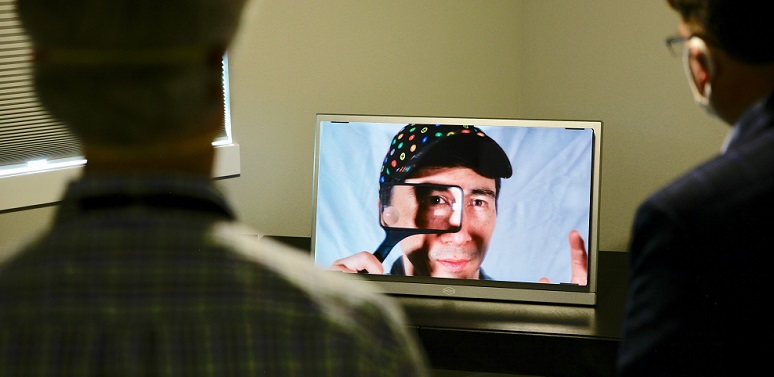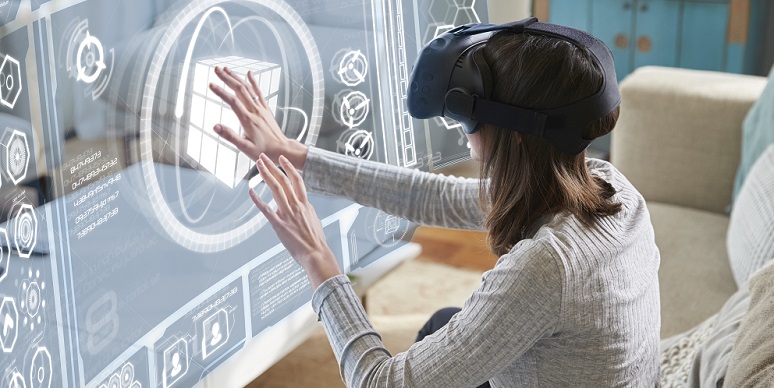How 10G Networks Will Power Holographic Technologies

Holograms could be on their way to becoming fixtures in people's living rooms in the near future, thanks to exciting developments in the cable industry's 10G initiative. For decades, engineers and innovators have been designing the light field displays responsible for creating photorealistic holograms, and some are even available as commercial products. Behind the scenes, stakeholders across the industry have been preparing cable networks to bring 10 gigabit speeds to homes across America, and paving the way to enable these kinds of next-generation experiences that people used to only see in
Cable ISPs Are Powering Smart Communities Across America

The past few years has seen a surge in smart community projects across the U.S. In fact, it has been estimated that $124 billion will be spent in 2020 alone on these projects. As a new whitepaper explains, smart communities are those that employ IoT solutions to address community challenges and create new opportunities. With more of these projects popping up in urban, suburban, and rural regions, the report shares relevant partnership models and lessons to be gleaned by municipalities, hospitals, universities, and other entities that seek to best utilize smart community projects to improve
VIDEO: Get a Glimpse of the Future with the 10G Smart Home

This September, Mediacom along with CableLabs and NCTA, unveiled the 10G Smart Home in Ames, Iowa. The smart home was wired with an enhanced broadband network that demonstrates how a 10 Gbps home network will transform our daily lives, and the rich media experiences that are just around the corner. The 10G Smart Home features an enhanced broadband network and cutting-edge technology. Over 70 internet-enabled devices run on the Smart Home’s connection, many of which have bandwidth-heavy applications that require the super-fast speeds, low latency, and increased security made possible by 10G
10G: Powering Economic Progress and Jobs in the U.S. Economy

New Technology Estimated to Contribute $330 Billion and over 676,000 jobs to the U.S. Economy by 2027 The future is closer than it might seem, especially with 10G just around the corner. As the COVID-19 pandemic has demonstrated, the virtue of a robust, high-speed, and reliable internet connection has never been more evident, and the cable industry has continued its work to stay ahead of consumer demand. Indeed, 2020 has seen major developments on the road to 10G – the cable industry’s initiative to bring broadband speeds of up to 10 gigabits per second to residential households across the U.S
The First 10G Smart Home is Here

What exactly is a 10G Smart Home? To put it simply, it is the home of the near future, where every device connects seamlessly and where the kinds of next-generation experiences that were once unimaginable are made possible by an ultra-fast 10 gigabit speed internet connection. Now, there is a real-life model of what 10G, the cable industry's initiative to deliver internet speeds that are 10x faster than today's networks to households across America, has in store for consumers. The Mediacom 10G Smart Home was unveiled yesterday in Ames, Iowa, for a tour, and represents the first U.S. field
New SCTE•ISBE-Led Effort Brings Emerging Technologies to the Table for the 10G Era

To check the latest findings on nationwide broadband network performance during the pandemic, go to the NCTA COVID-19 dashboard. Every year ushers in a new era of connectivity as next-generation technologies continue to debut and consumers demand more digital-centric experiences. The COVID-19 pandemic has no doubt accelerated the rate at which Americans are adopting these technologies for applications such as telemedicine, remote learning, and virtual entertainment—all of which require a high-speed broadband connection. Fortunately, the cable industry has been working on bringing 10 gigabit
Tracking Cable's Broadband Performance During the Pandemic

Broadband networks were put to the test like never before when they experienced a surge in internet traffic during state stay-at-home orders this past spring, especially during March and April. But fortunately, cable ISPs are constantly upgrading their networks and staying ahead of consumer demand to provide Americans with a robust and reliable connectivity experience, no matter the time of day or how many people or devices are online. So in order to be as transparent as possible about the ability of ISPs to handle this kind of internet usage surge, NCTA began tracking the performance of
Virtual Reality, Virtual Sets, Real Entertainment

While 2020 has forced many industries to quickly adapt to new ways of working, TV and film have always sought creative solutions to create amazing programming. These challenges, more recently, have been made easier with new technologies that require high-capacity broadband connections. How would different parts of a TV or film crew, be it the set design department or post-production team or visual effects team, learn to work together, remotely? That conundrum was at the center of a panel discussion at this year’s Comic-Con, which was held remotely this year due to COVID-19. “The main thing I
What Will the Future of Entertainment Look Like?

The COVID-19 pandemic has no doubt accelerated the speed at which most people are adopting next generation technologies and applications. Broadband has also proven to be the enabler of these technologies, as networks continue to run at full capacity and power the amazing virtual interactions that Americans are engaging in as they spend more hours at home. And with 10G around the corner—the cable industry's commitment to bringing ultra-fast speeds to U.S. households—these technologies and experiences will get that much closer to becoming staples in American life. During a virtual panel at the
How ISPs Used AI and Machine Learning to Manage the COVID-19 Internet Traffic Surge

Internet traffic during the pandemic continues to plateau since it experienced its largest surge in March and April, when more people were working from home than ever before and students turned to distance learning to finish off their school year. Now, with more people returning to work sites each month and students out of school for the summer, traffic has stabilized. However, there is no telling what the future holds as the pandemic continues on and as schools wrestle with reopening decisions for the fall. But no matter what happens, America's cable internet service providers are ready to
